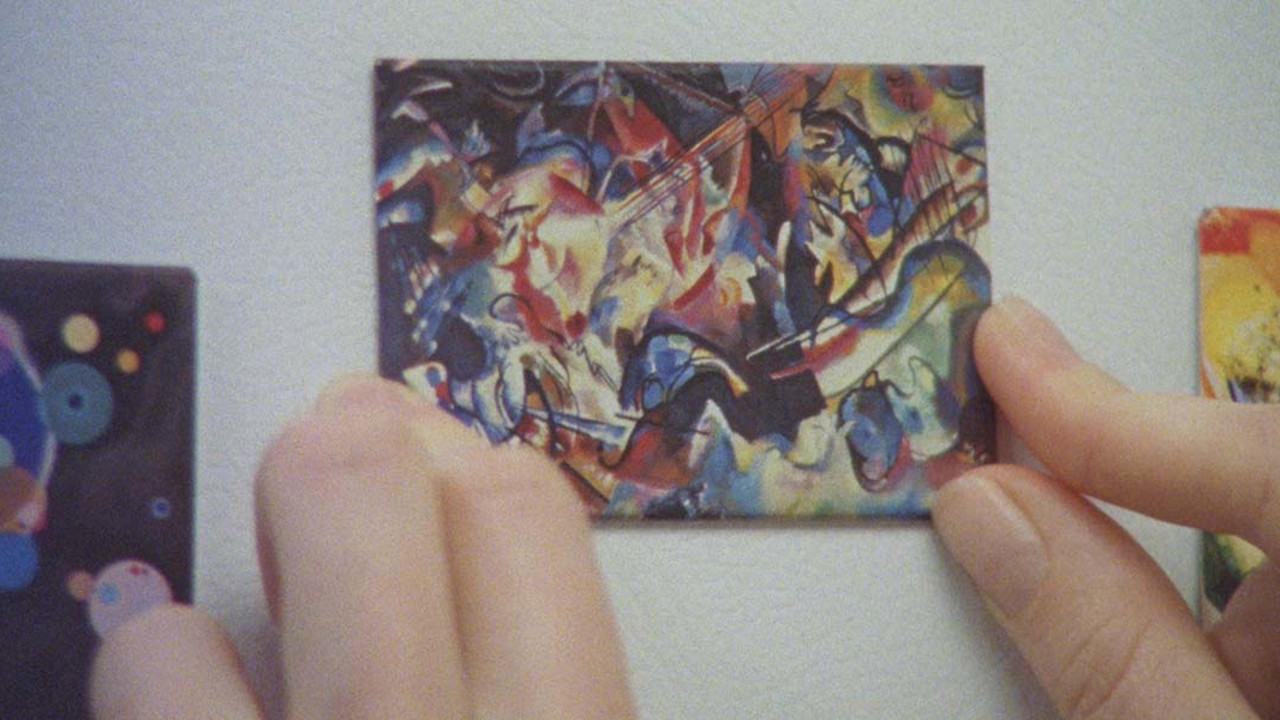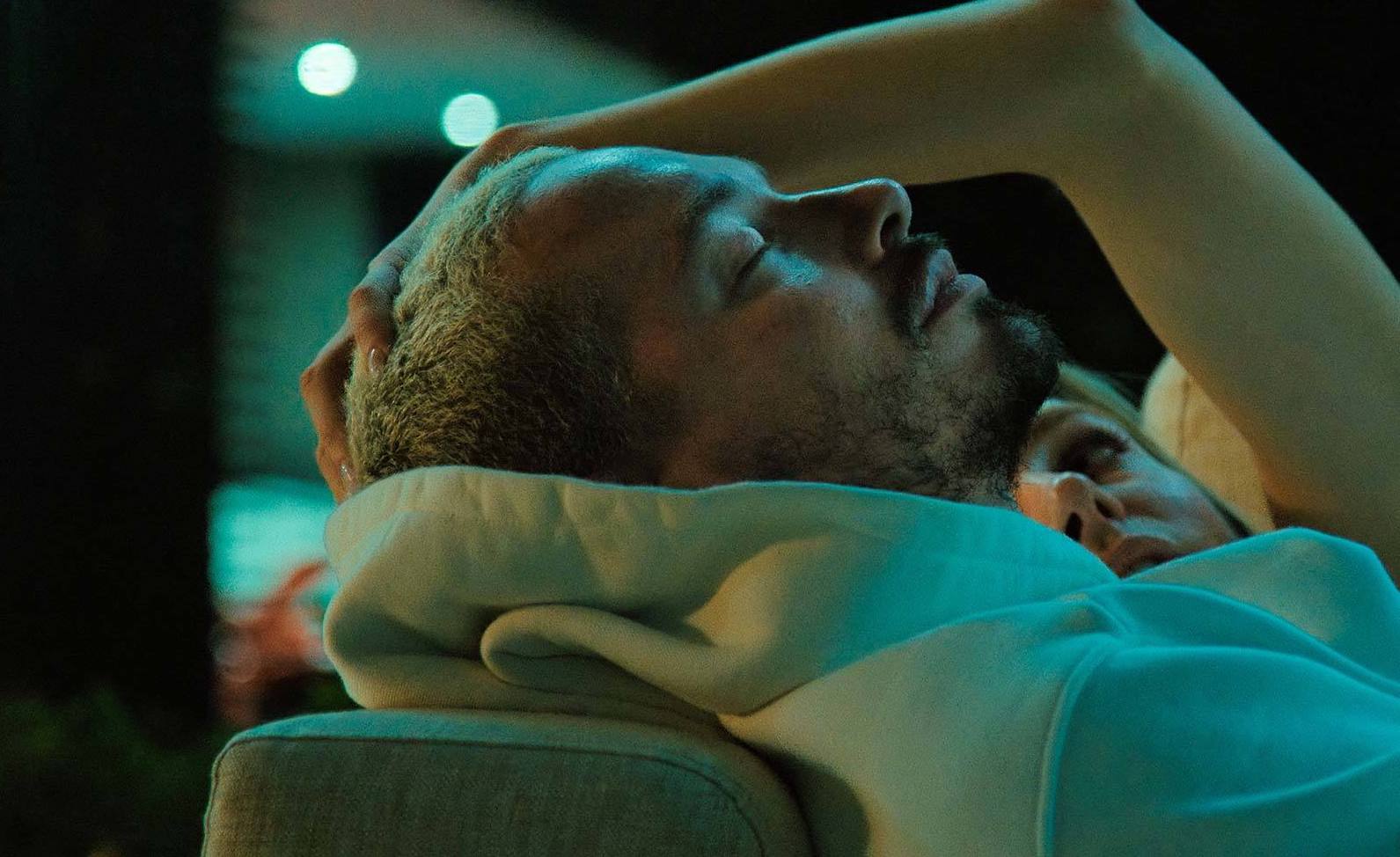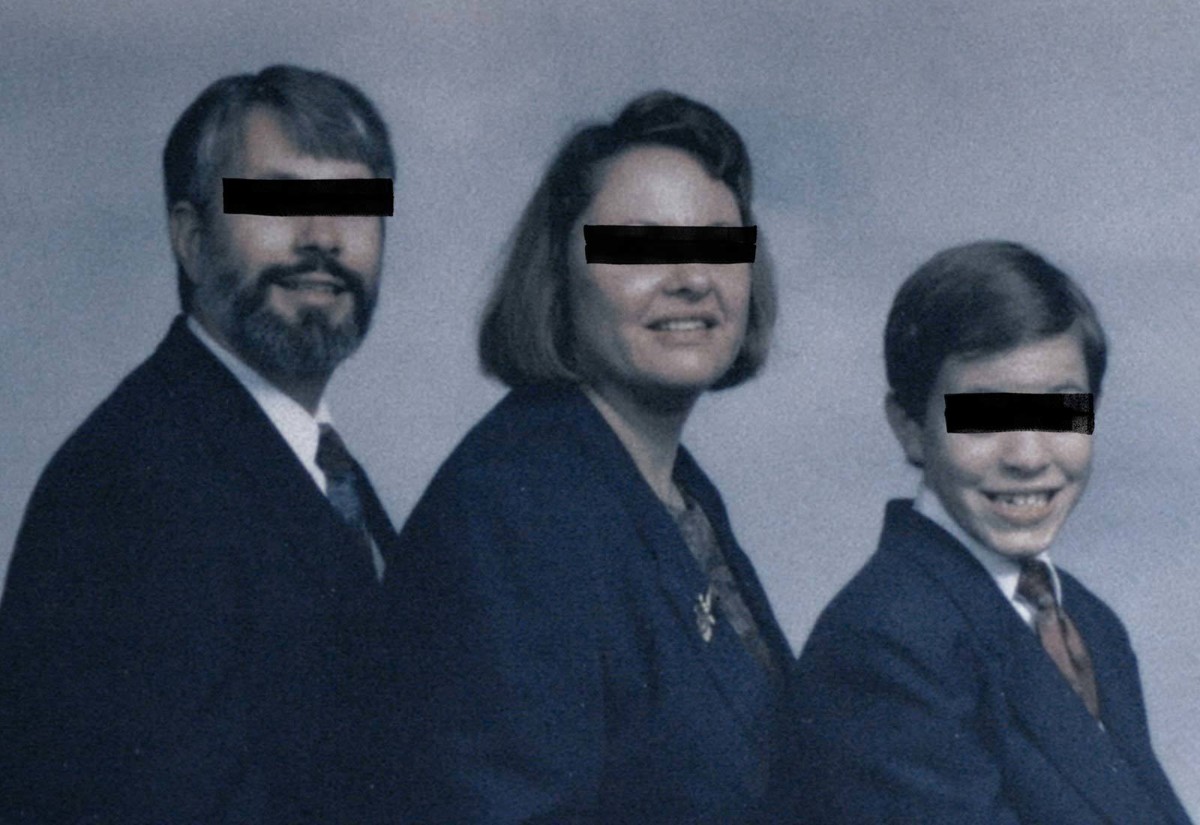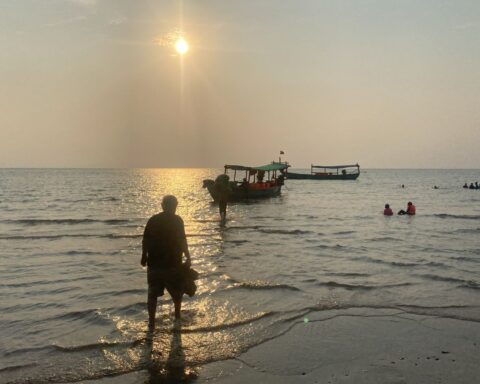Sofia Bohdanowicz and Deragh Campbell occupy a rare space in the Toronto film scene. You can’t discuss one without mentioning the other. The duo bring their latest collaboration home with Point and Line to Plane premiering at the Toronto International Film Festival (TIFF). Like this year’s edition of TIFF, Bohdanowicz and Campbell’s latest film is a hybrid. But unlike the behemoth festival, they’re used to straddling different planes.
Point and Line to Plane follows in the tradition of the team’s previous collaborations Never Eat Alone, Veslemøy’s Song, and MS Slavic 7 by taking nuggets of Bohdanowicz’s life and twisting them into fiction. (Bohdanowicz directed all three films with Campbell as the star, with Campbell co-directing MS Slavic 7.) This outing sees Campbell’s character Audrey Benac make her fourth appearance as Bohdanowicz’s alter ego (and, to an extent, Campbell’s) even though Point doesn’t explicitly name her. Audrey’s latest adventure once again sees her combing through the archives, although after the films, musical recordings, and letters that fuelled her previous outings, this quest draws inspiration from a defining moment in Bohdanowicz’s life. (Campbell also appears in this year’s Festival selection Succor)
The film sees Audrey navigate grief and memory, tracing her experiences with a recently departed friend through specific moments in time, as well as tangible items that preserve the memories. Her relationship with the items evokes an effort to defy the ephemeral and escape her grief by transferring her relationships to these found items. The film evokes the interplay between archive, memory, fact, fiction, presence, and absence that informs the duo’s work.
POV spoke with Bohdanowicz and Campbell, the former calling from the home of Juliane Sellam in Paris (ie: the Maison du Bonheur from her hit feature) and the latter from Toronto, to discuss their new film and career together.
POV: Pat Mullen
SB: Sofia Bohdanowicz
DC: Deragh Campbell
This interview has been edited for brevity and clarity.
POV: Archival pieces like music, letters, and films have been starting off points for your films, but I understand the springboard for this one was more of an event. What was it like shaping a film around an event as opposed to something tactile and discreet?
SB: The film started when I went to the Guggenheim when the Hilma af Klint show went up. I filmed the footage at the Guggenheim on my iPhone before my friend passed away. It was a strange occurrence because I went to the Guggenheim to see the show, but I got the dates wrong and they were installing the show. But I used to work as an art archivist—I would photograph people’s art collections and put them in databases— so I’m fascinated by the way people hang art, especially in galleries. I got a ticket and watched people install the work.
The narrative reminded me of something that happened to Audrey in “Veslemøy’s Song“:http://povmagazine.com/articles/view/short-circuit — travelling really far to see something and not having access to it. When I went back to the show the next day, I noticed that Klint’s work featured Venn diagrams. They reminded me of patterns that I had seen in my neighbour, Jaan Poldaas’s, art. Five days later, Jaan passed away. Ten days after that, I was in Vienna at the Viennale presenting a short film with a friend—you see that footage was lifted from an Instagram story in the film—and I found out that my friend Giac had passed away. He was the first producer of my earlier short films. We met in film school.
POV: Can you tell me more about that experience?
SB: It was a sudden shock to lose two people who were significant in my life. My brain was trying to understand how these people had disappeared and it was trying to catch up to reality. That’s the phenomenon of magical thinking. Freud coined that term to explain how your brain yearns to continue a relationship. An individual can do that by looking for coincidences. A point of intersection that Giac and I had was our love for Wassily Kandinsky’s work. That connected me back to the Guggenheim, which was built to showcase non-objective art and Kandinsky’s art more specifically.
Hilma af Klint was a predecessor to Kandinsky. As I was accumulating footage and finding coincidences, I found out that Giac was in New York the same weekend I went to the Guggenheim. It was the last trip he took. He passed away on Hilma af Klint’s birthday, which is another strange coincidence. At Giac’s funeral, his sister said, “People will forget what you said; they’ll forget what you did, but they’ll never forget how you made them feel.” Whenever I look at Kandinsky’s work, I remember how Giac made me feel–there’s this essence and energy that suddenly described our relationship.
POV: This character seems to be more overtly inspired by Sofia than previous characters, so how was it for you, Deragh, stepping into your director’s head?
DC: The character of Audrey Benac has that flexibility. Sometimes she’s more explicitly an avatar for Sofia. Other times, she’s more of a fusion of the two of us. I think of Audrey as channelling Sofia’s experience in this film, like what you were saying about trying to capture an event, rather than a tangible object. Before, it began with an object and then trying to find the feeling that the object created. This film is the opposite. Sofia was accessing her personal archive in order to find images to represent a feeling of loss. I haven’t had the same experience that Sofia has.
POV: How do you create that experience?
DC: Sofia reconstructs situations that I can place myself in and react to, like going to an art gallery and looking at paintings. It was a bit more of a traditional acting experience because I had to demonstrate grief. I don’t have a psychological process and I don’t use triggers to access my own feelings. For me, the process is more about thinking how grief manifests itself physically in the body. I makes a person look drained and kind of concave, like seeing the life force sucked out of someone.
POV: How does the process of collecting archival materials and creating a collage interact with the creation of Deragh’s character?
SB: This film is about a period of my life where I was in an extraordinary amount of pain. I wasn’t experiencing time in a linear way. The film is about a person’s dismemberment from herself, from her body, reality, and current surroundings. I wanted to depict a person who becomes a time travelling ghost. They’re trying to look at their last steps and understand how they came to be in this present moment. it was collected intuitively after I shot the footage at the Guggenheim. Giac passed later that fall and my realisation of the Hilma af Klint and Kandinsky connections led through the New York sequence. I wrote a letter to my grandmother and it poured out of me. That was how the film started. I shared it with Deragh and she thought I had something and helped me workshop it. Deragh’s really involved in the way the edit comes together because it reacts to her performance. There’s a bit of give-and-pull: she saw some footage and placed herself within it.
POV: This film doesn’t name Audrey, but I’ve noticed that commentary about the film, even with you both in interviews, refers to her as Audrey. Why not name her?
SB: I think Deragh is that character, but there is a difference in terms of process. In MS Slavic 7, Deragh performed monologues based off her reactions to my great grandmother’s letters. This piece is very controlled and calculated, whereas our other collaborations were largely improvised. I suppose that because the story is so closely tied to my own personal journey of grief, the character isn’t specifically named so that experience can be transferrable. She is Audrey, but she isn’t. She is me. She leaves space to be looked at and to be interpreted because there was so much to glean from the personal archive of images that I accumulated during this very traumatizing time.
POV: This interpretation of Audrey seemed very different from previous ones, though. In your interview with José Teodoro last year, Deragh said that Audrey was defined by control and that Anne in Anne at 13,000 ft was an idea of abandonment. I felt that sense of abandonment in this take on Audrey, so can you tell me how or if your collaborations with one director inform another?
DC: Our playful thing with Audrey is that she remains Audrey by having the name Audrey. We like that she can be a different person every time. I defined this process a bit more for myself with Anne at 13,000 ft. I like the idea that you don’t have to control the character’s behaviour too much because, as a person, you behave in so many different ways. The idea that a character can be a different person from scene to scene is a way of creating a character. I’m lucky to have collaborators that I trust so that I’m allowed to do that.
SB: You make that space available to yourself because your collaborators can trust you based on what you bring to every film. You’re responsible for tethering these moving parts together and being a vehicle that thrusts along at breakneck speed. In every film, Audrey is in her own isolated universe and has her own quest. In every film, the narrative, the world, and the journey are built upon quixotic goals, like capturing a recording or putting letters on display and curating an exhibition for her great-grandmother’s work. In this film, she’s trying to find the essence of a deceased friend through objects, memories, experiences that she collected as she travelled.
POV: Your films have a great relationship with physical media. I watched this film shortly after doing a mass un-tagging binge on Facebook and the film made me realise that there will soon be no available pictures of me in my late 20s and early 30s. Our generation has such an ephemeral relationship to these archives, so can you tell me if these films have shaped your own relationships with archives and physical media?
DC: I’ve lost my cell phone twice this year and lost a lot of photos and memories. When you don’t have them in a physical form, you realize how fleeting these things can be.
SB: For me and material objects, the relationship is about finding their history by looking at their erratic qualities. It’s about seeing what kind of energy those objects emit in terms of how an individual might react to them or be inspired. This film wasn’t necessarily about showcasing and exhibiting objects that had history like they did in our other films. When you go through a period of grieving, it’s a very personal and individual experience. It’s too painful to think that [someone’s life] was for nothing. It has to add up to something and it has to mean something. For me, it was about looking at objects like Mozartballs or paintings in art galleries and finding greater meaning.
I found passages in [Wassily Kandinsky’s book] Point and Like to Plane that were waiting to be discovered. Kandinsky talks about how he wanted to represent energy, like sound, in his canvases. That’s why many of his paintings were called improvisations, realizations, and compositions because they were all about giving an image to what we couldn’t see. His paintings give a promise of eternal life. Energy doesn’t disappear. It still exists somewhere. I’m not a very spiritual person, but this idea felt comforting. I realized that through my search, I could find traces and energy and pieces of my friend that, maybe for brief moments, would bring a glimmer of him back to me.
POV: Deragh, can you follow that? [Laughs]
DC: I’ve always kept notebooks and it was nice to explore that particular love in MS Slavic 7. As you encounter information, you’re constantly writing it down and making it part of yourself. If any part of working with Sofia has changed the way I take in information, I really admire her visual sense. I’ve never met someone that thinks quite as much with images as she does whereas I’m a language-based person. She’s inspired me to be more interested in images specifically, which is a pleasure.
POV: I have to ask the inevitable COVID question: did the pandemic have an impact on the film?
SB: We were lucky because the film was done pre-pandemic. It’s strange because the film feels like a COVID film because we’re staying at home. We’re all doing a lot of time travelling and thinking about the past and moving through regrets. A lot of therapists and psychoanalysts have said that their patients were thinking about past relationships—things they had done wrong and ways they could correct them. We are fortunate because we’re in the midst of writing a fourth Audrey installment together, a feature film, and it’s a mammoth project that’s going to be shot in three different countries. We’re taking our time with the project. I feel very fortunate that I am in no stage of production.
POV: Most importantly, though, how did the tomato soup that Audrey had at the Guggenheim compare to the cheese sandwich she had at New York University Library in Veslemøy’s Song?
DC: I ate the sandwich, but Sofia ate the soup at the Guggenheim. We don’t share the same taste buds.
SB: The York University sandwich was super cheap and it was on brown bread that was kind of stale, but had a moist inside that had seeped into the bread for a little too long. The soup at the Guggenheim was off the hook. It was creamy, like a rosy sauce with spinach and porcini mushrooms. It came with sliced pieces of focaccia. It was the best seven American dollars I ever spent!
POV: I’m glad we did this interview after lunch!
Point and Line to Plane screened at TIFF 2020.











